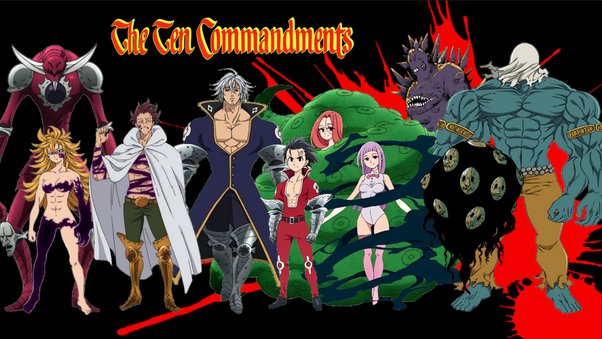Uncategorized
All Demons Of The Ten Commandments In Seven Deadly Sins
“The Seven Deadly Sins” (Nanatsu no Taizai) is a captivating anime series filled with complex characters and a richly woven plot. One of its most intriguing aspects is the Ten Commandments, a group of elite demons who play a crucial role in the narrative. Each member of the Ten Commandments possesses a unique commandment that grants them extraordinary powers and shapes their personalities. In this article, we will explore all the demons of the Ten Commandments, delving into their backgrounds, abilities, and significance within the series.
Meliodas – The Commandment of Love

Meliodas, the former leader of the Ten Commandments, represents the Commandment of Love. This commandment prevents anyone harboring hatred in their heart from harming others. As the eldest son of the Demon King, Meliodas was initially tasked with leading the Ten Commandments to enforce the Demon Clan’s rule. However, he eventually betrays them to join the Goddess Clan, driven by his love for Elizabeth and desire for peace.
Meliodas’s time with the Ten Commandments is marked by his immense strength and leadership. His departure sets the stage for the series’ central conflict, as his former comrades seek revenge and the restoration of their power.
Zeldris – The Commandment of Piety
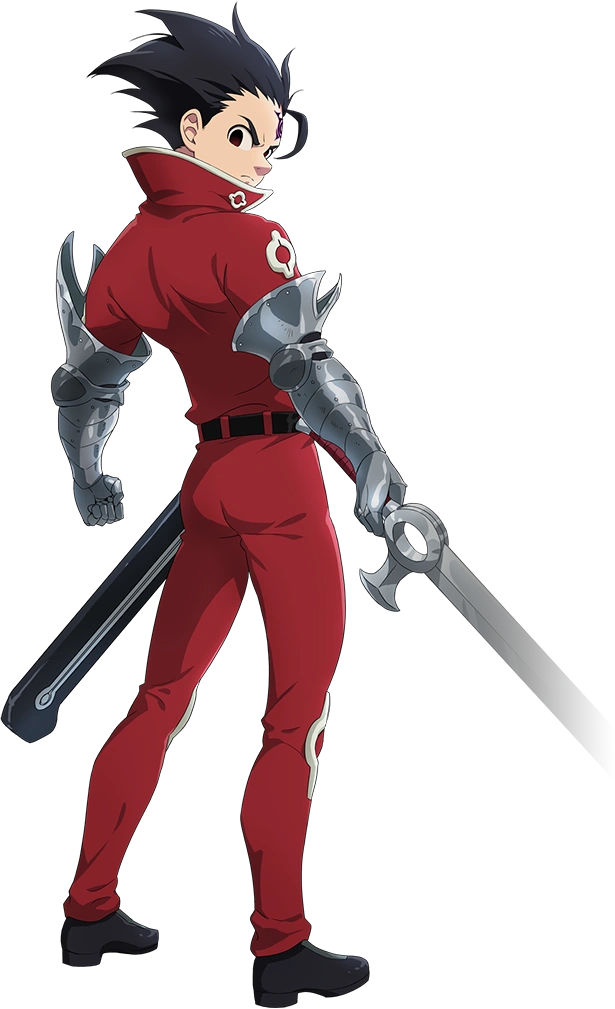
Zeldris, the younger brother of Meliodas, wields the Commandment of Piety. Those who turn their back on Zeldris or disobey him are forced into absolute subservience. Fiercely loyal to his father, the Demon King, Zeldris harbors deep resentment towards Meliodas for his betrayal.
Zeldris is a formidable warrior with exceptional combat skills and the ability to channel the Demon King’s power. His unwavering dedication to the Demon Clan and his tragic love story with the vampire Gelda add layers to his character, making him one of the series’ most complex figures.
Estarossa (Mael) – The Commandment of Love
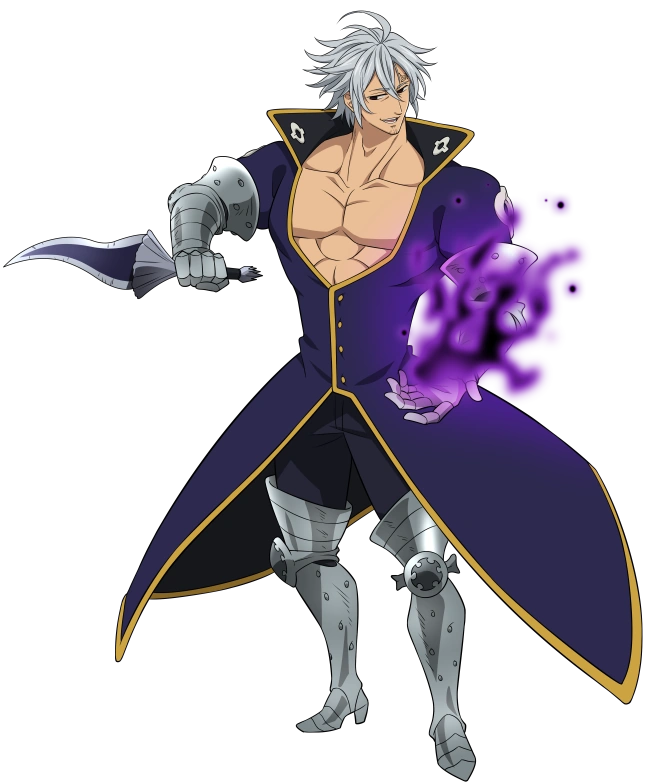
Estarossa, originally Mael of the Four Archangels, is given the Commandment of Love after Meliodas’s defection. Those who harbor hatred in their hearts are rendered powerless in his presence. Estarossa’s complex backstory involves deep-seated jealousy towards Meliodas and a complicated relationship with the Goddess Elizabeth.
His transformation into Mael and subsequent descent into madness highlight his internal struggles and the consequences of tampering with forbidden powers. Estarossa’s arc is pivotal, intertwining with the overarching themes of love, betrayal, and redemption.
Galand – The Commandment of Truth
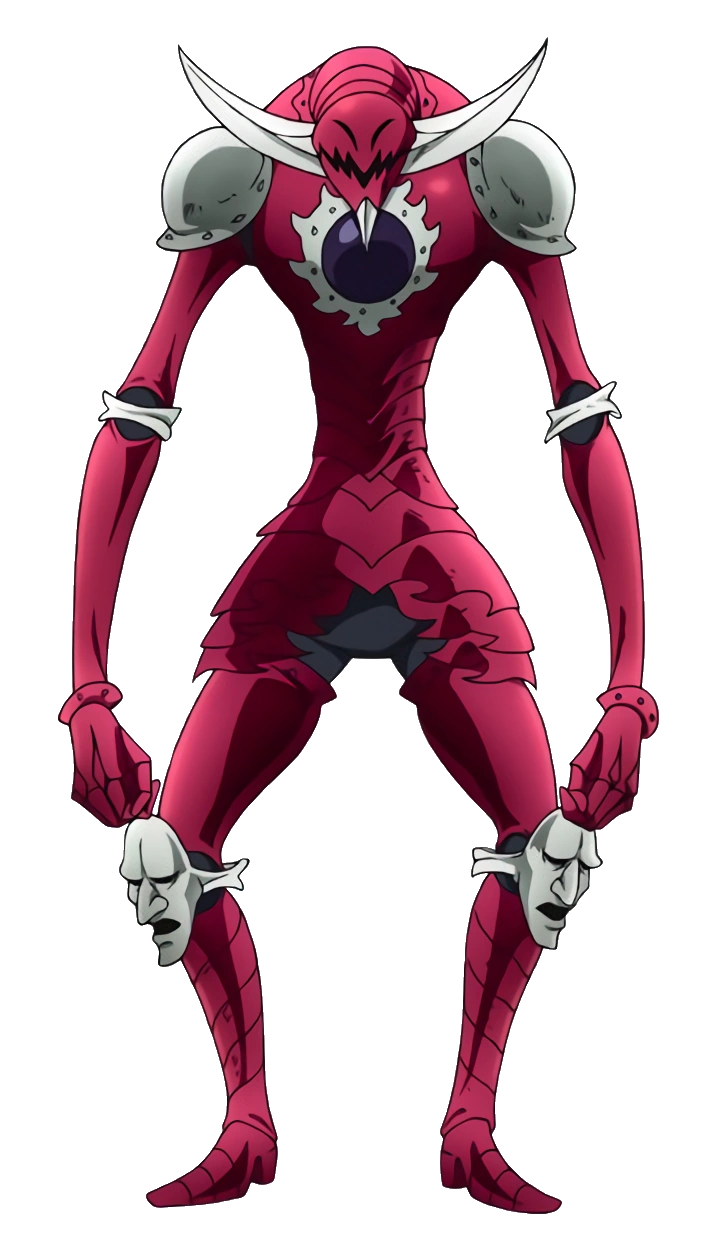
Galand, the Commandment of Truth, possesses the ability to turn anyone who lies in his presence into stone. This brutal power reflects his own straightforward and violent nature. Galand is a fearsome warrior who revels in battle and destruction.
His overconfidence and adherence to his own rules lead to his eventual downfall. Galand’s encounters with the Seven Deadly Sins provide some of the most intense and thrilling battles in the series, showcasing his formidable strength and tragic hubris.
Monspeet – The Commandment of Reticence
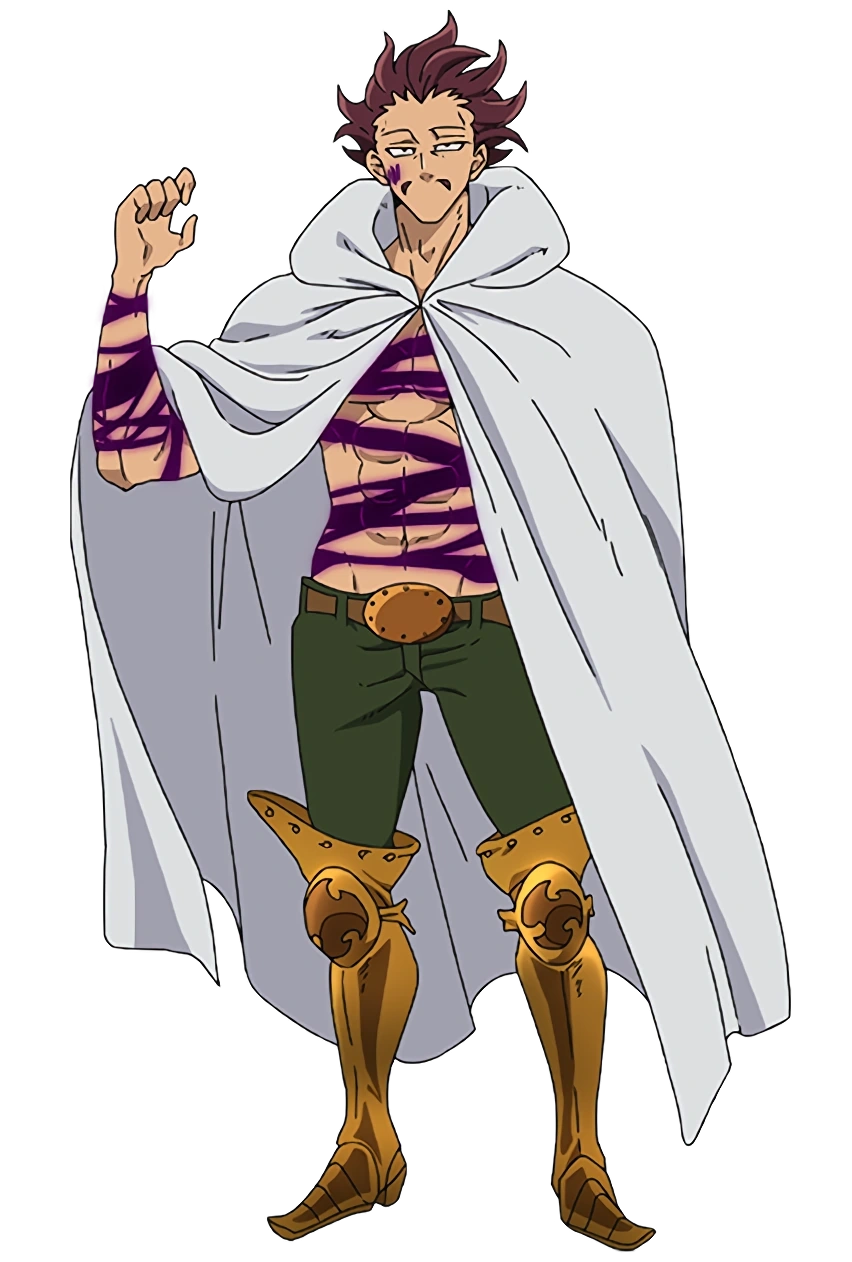
Monspeet, known as the Commandment of Reticence, curses anyone who expresses hidden feelings, rendering them mute. He is a reserved and strategic individual, often acting as a voice of reason among the Ten Commandments. His deep affection for his fellow Commandment, Derieri, humanizes him and adds a touch of vulnerability to his character.
Monspeet’s magical abilities, including Hellfire manipulation, make him a formidable adversary. His ultimate sacrifice to protect Derieri underscores the themes of loyalty and love that permeate the series.
Derieri – The Commandment of Purity

Derieri, bearing the Commandment of Purity, punishes those who commit impure acts in her presence. She is a fierce and straightforward warrior known for her brutal combat style and immense strength. Her relationship with Monspeet and her tragic backstory provide depth to her character, revealing a more compassionate side beneath her tough exterior.
Derieri’s journey from a vengeful demon to a character seeking redemption mirrors the broader themes of forgiveness and change within the series. Her evolution adds richness to the narrative, showcasing the potential for growth even among demons.
Gloxinia – The Commandment of Repose

Gloxinia, the Commandment of Repose, prevents those who kill in his presence from recovering their strength. Originally the first Fairy King, Gloxinia joins the Ten Commandments after being disillusioned by the atrocities committed during the war between the Demon and Goddess Clans.
Gloxinia’s abilities, including control over life and death through his connection to the Sacred Tree, make him a formidable opponent. His eventual redemption arc, where he reassesses his choices and seeks to atone for his past, reflects the series’ exploration of forgiveness and the consequences of one’s actions.
Drole – The Commandment of Patience
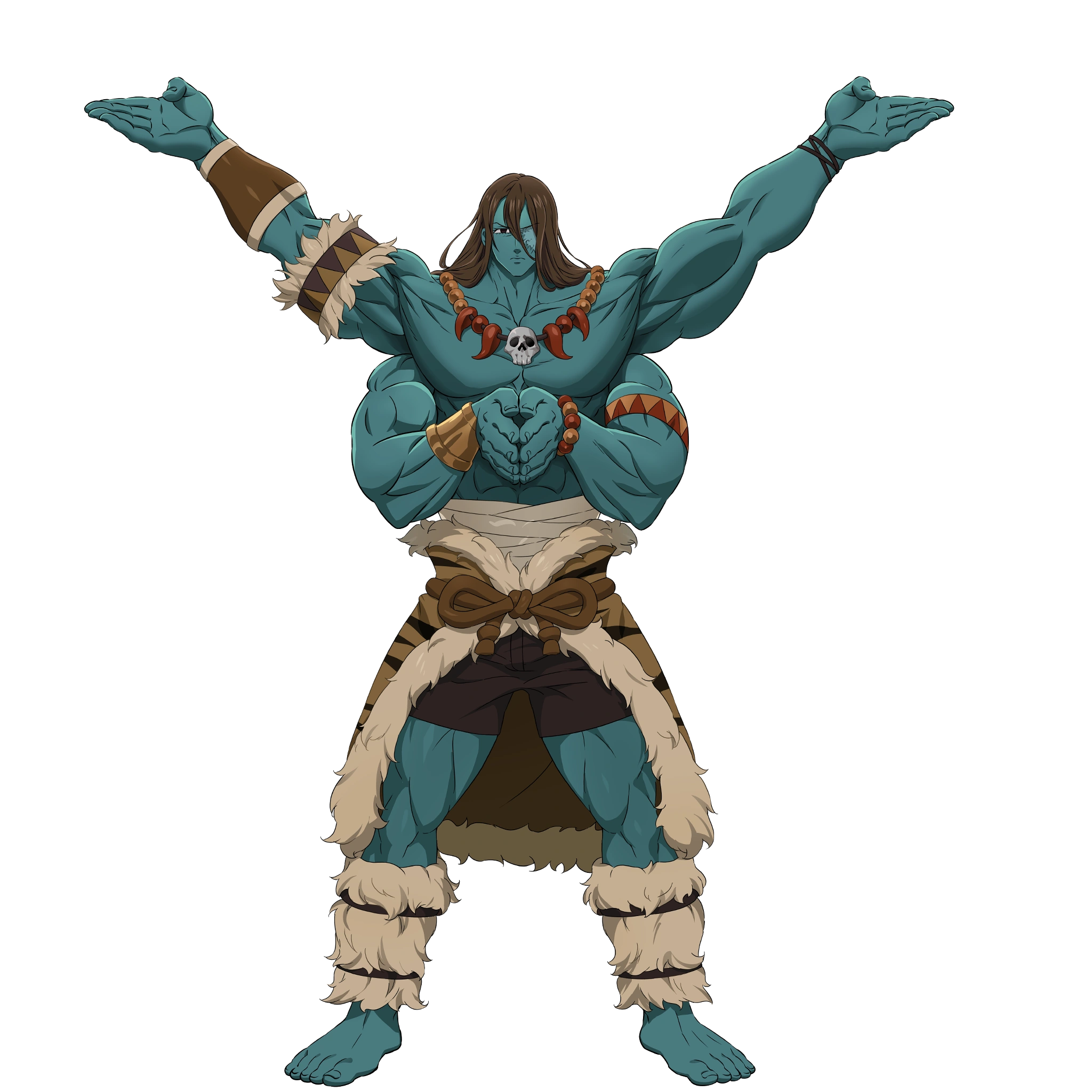
Drole, also known as the Commandment of Patience, punishes those who show a lack of patience in his presence by turning them into stone. Formerly the King of the Giant Clan, Drole’s immense physical strength and earth manipulation abilities make him a powerful adversary.
Drole’s decision to join the Ten Commandments stems from a desire to protect his clan and seek a greater purpose. His eventual realization of the futility of the Demon Clan’s cause and his subsequent redemption highlight the series’ themes of loyalty, sacrifice, and the quest for peace.
Grayroad – The Commandment of Pacifism
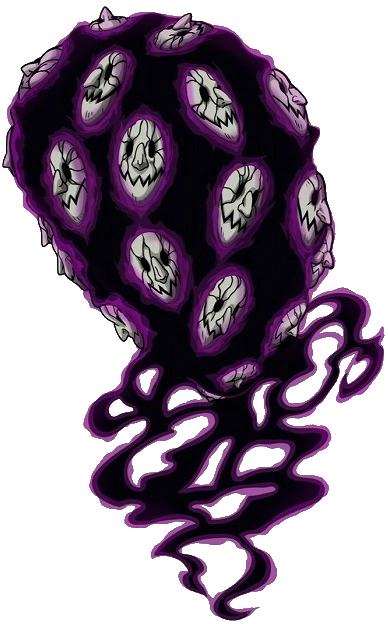
Grayroad, bearing the Commandment of Pacifism, curses anyone who kills in her presence with rapid aging. This unique ability makes her a strategic and dangerous foe, despite her seemingly passive nature. Grayroad’s demonic powers, including the ability to create clones and spread diseases, add to her threat level.
Her character adds an element of horror and strategic complexity to the Ten Commandments. Grayroad’s encounters with the Seven Deadly Sins and her eventual defeat underscore the importance of intelligence and strategy in combat, beyond mere physical strength.
Fraudrin – The Commandment of Selflessness
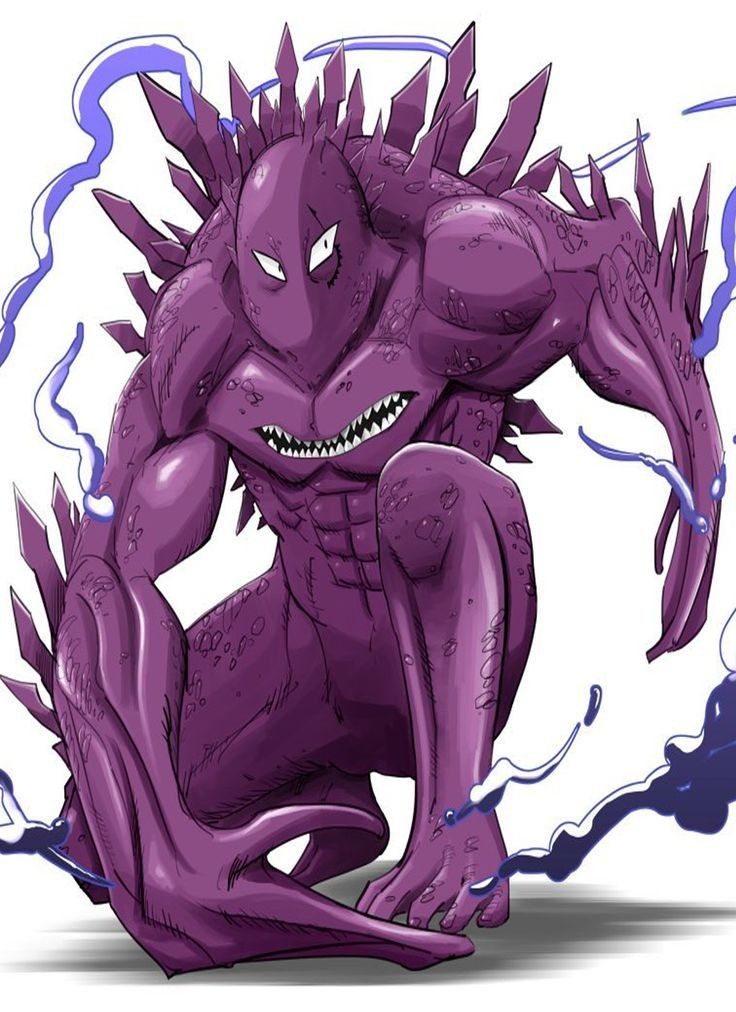
Fraudrin, who takes on the Commandment of Selflessness, forces anyone with selfish desires to lose their sense of self. Acting as a temporary replacement for the original Commandment of Selflessness, Fraudrin’s role is pivotal in the series’ early conflicts.
His ability to possess and control others adds a layer of psychological horror to his character. Fraudrin’s personal vendetta against Meliodas and his role in the initial betrayal of the Liones Kingdom set the stage for the series’ central conflicts. His ultimate confrontation with Meliodas highlights themes of revenge, redemption, and the destructive power of hatred.
Conclusion
The Ten Commandments are central to the narrative of “The Seven Deadly Sins,” each bringing unique abilities, complex backstories, and moral dilemmas to the series. Their interactions with the Seven Deadly Sins and other characters drive the plot forward, providing a rich tapestry of conflict, growth, and redemption. By exploring the depths of these characters, “The Seven Deadly Sins” offers a compelling and multifaceted story that continues to captivate audiences worldwide. Above is some information you can know about Seven Deadly Sins. Click here for more information and our products!

